Discovering Nepal’s Unique Architecture Nestled in the lap of the mighty Himalayas, Nepal is a country that captivates visitors with its breathtaking landscapes and rich cultural heritage.

Discovering Nepal’s Unique Architecture: Embarking on a Journey to Explore a Tapestry of Ancient Temples, Royal Palaces, and Traditional Houses Amidst Majestic Mountains and Vibrant Traditions
Traditional Newari Architecture:
The Newari people, an ethnic group indigenous to the Kathmandu Valley, have significantly contributed to Nepal’s architectural legacy. The unique craftsmanship and attention to detail characterize Newari architecture.

Religious Structures:
Nepal’s renowned religious diversity features Hinduism and Buddhism as its dominant religions, resulting in the presence of magnificent temples, monasteries, and stupas that exhibit impressive architectural styles.
Also Read: 19 You Need To Know Before Visiting Nepal
Pagoda Style
The pagoda style is prevalent in Nepalese temple architecture. It features multiple tiers of roofs, each diminishing in size, creating an elegant and tapering structure. These roofs are often adorned with intricate wooden carvings and embellished with gilded metalwork.
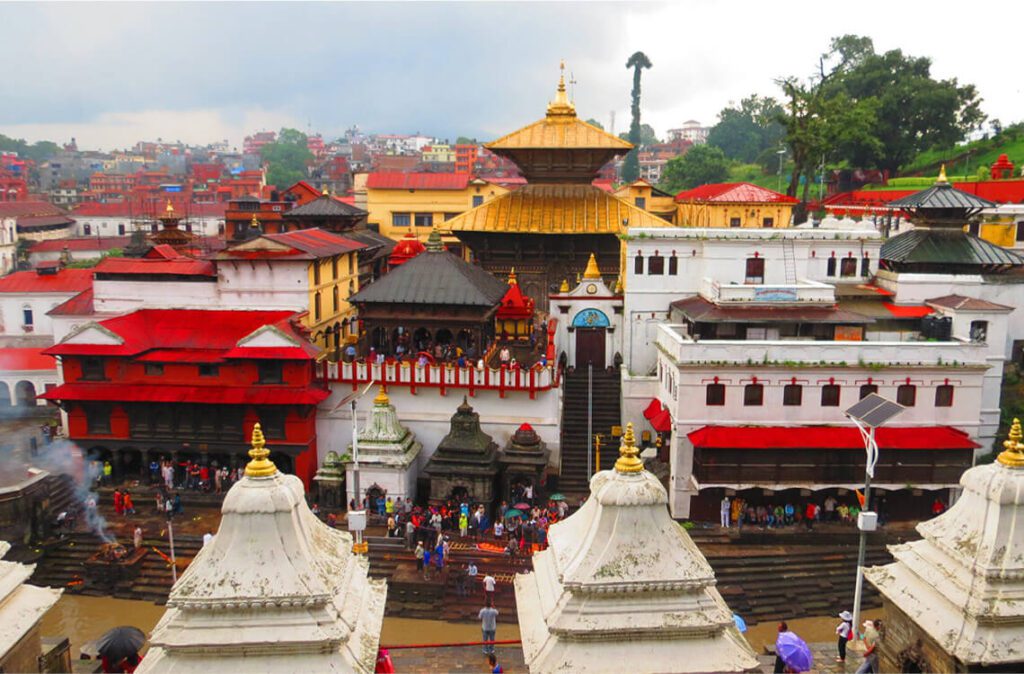
The Pashupatinath Temple is one of the most sacred Hindu temples dedicated to Lord Shiva and exemplifies the pagoda style with its ornate tiered roofs and elaborate carvings.
Stupas
Stupas are monumental structures that hold religious significance in Buddhism. The Boudhanath Stupa which is located in Kathmandu is an iconic example.

The stupa is a massive dome-shaped structure adorned with Buddha’s eyes and surrounded by prayer wheels. It serves as a pilgrimage site and a place of worship for Buddhists.
Royal Palaces:
Various ruling dynasties mark Nepal’s history, and their grand palaces stand as architectural gems. The Durbar Squares in Kathmandu, Patan, and Bhaktapur are UNESCO World Heritage sites that showcase the luxury and architectural prowess of Nepalese royalty.
You may also like: Lukla Airport: Runway Length, Crash, History & More
Palatial Buildings
The palaces within the Durbar Squares feature intricately carved wooden columns, ornate windows, and elaborate courtyards. The buildings exhibit a fusion of Nepalese, Indian, and Tibetan architectural styles.
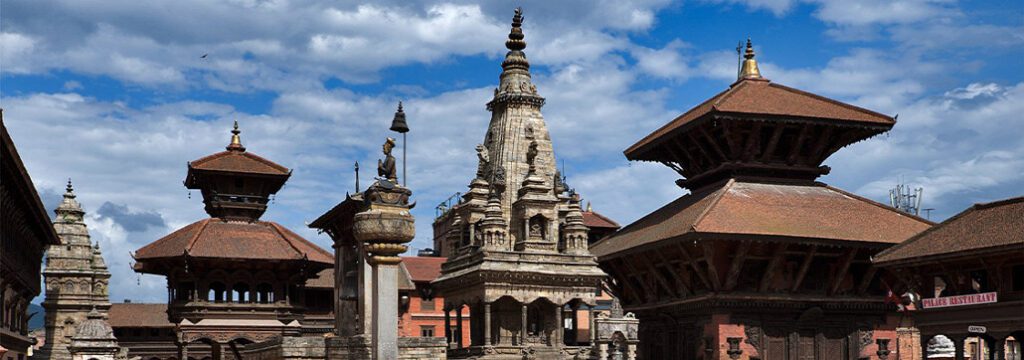
The Hanuman Dhoka Palace in Kathmandu Durbar Square and the Golden Gate in Bhaktapur Durbar Square are prime examples of the royal architecture of Nepal.
Buddhist Architecture:
Nepal’s strong Buddhist heritage is evident in its monasteries, stupas, and sacred sites. These structures exude a sense of tranquility and spiritual significance.
Swayambhunath:
Located atop a hill in Kathmandu Swayambhunath is a prominent Buddhist pilgrimage site. The complex features a white stupa with a golden pinnacle, prayer wheels, and colorful prayer flags.
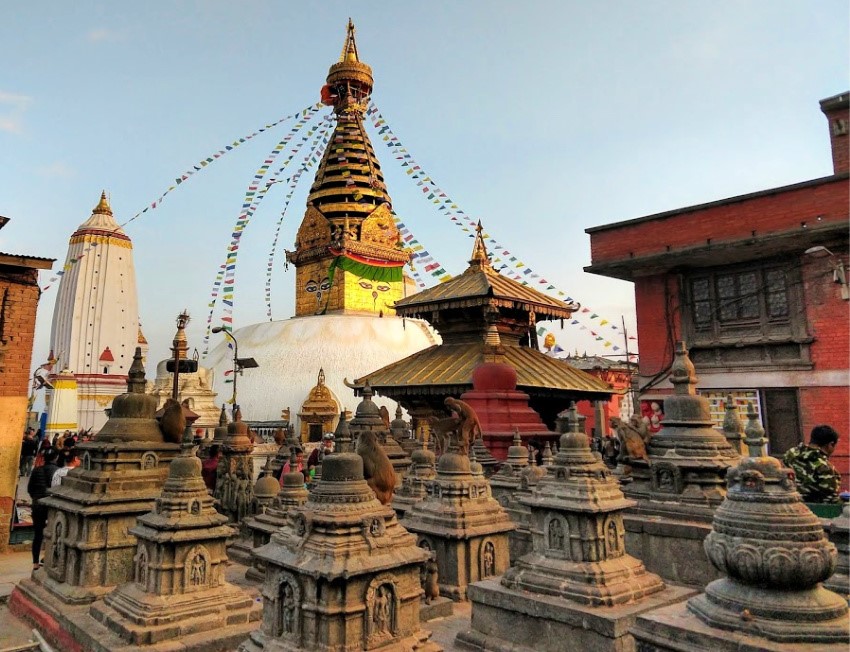
The surrounding monasteries and shrines showcase traditional Tibetan architecture and offer breathtaking panoramic views of the city.
Lumbini
Lumbini, located in the southern region of Nepal, holds a widely accepted belief that it is the sacred birthplace of Lord Buddha. This revered destination encompasses monasteries, temples, and, notably, the Maya Devi Temple, which marks the exact spot where Buddha was born.
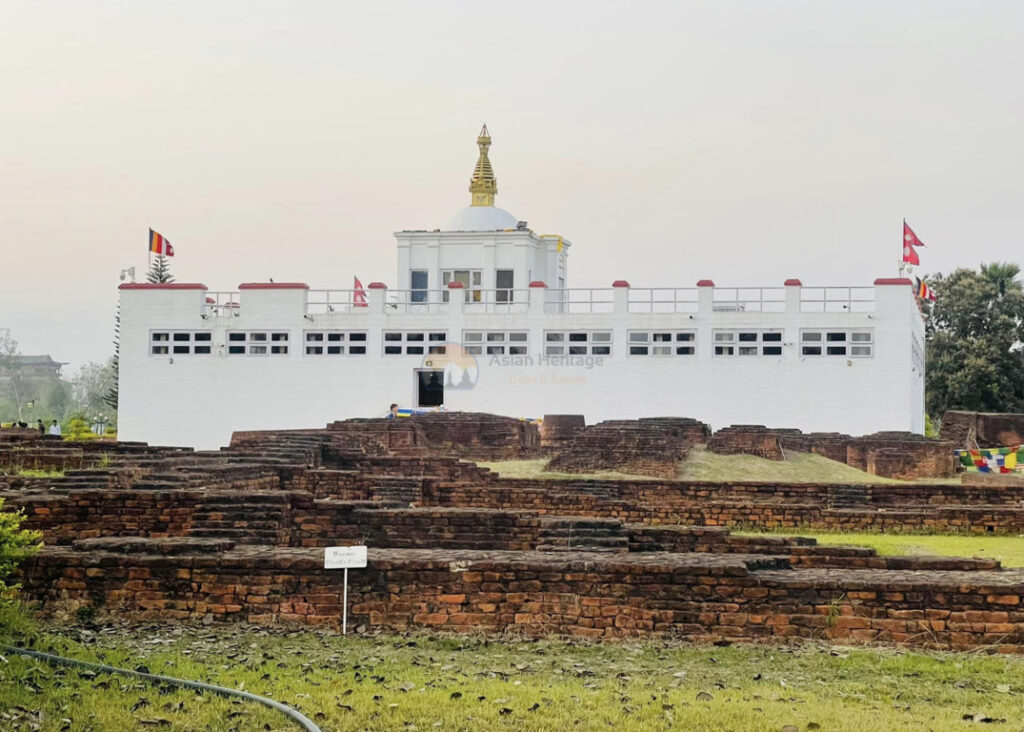
The architectural marvels of Lumbini harmoniously blend diverse Buddhist influences, showcasing an array of pagodas, prayer halls, and meditation centers that adorn its picturesque scenery.
Vernacular Architecture:
In rural areas, Nepal’s vernacular architecture showcases a simpler yet harmonious approach that integrates with the natural environment.
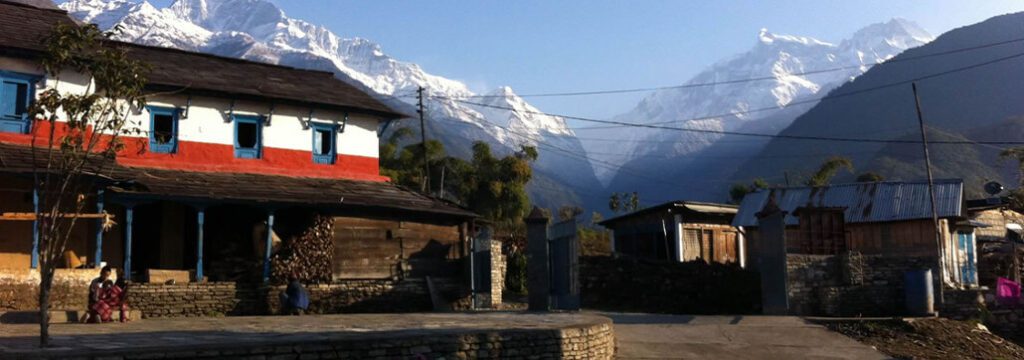
Traditional Houses
Traditional Nepalese buildings are constructed with locally accessible materials, such as stone.
Architecture of Nepal: Wood Carvings and Ornamentation
Wood carving is a prominent feature of Nepalese architecture. Local artisans showcase their craftsmanship and artistic prowess by meticulously carving intricate designs and motifs into pillars, beams, doors, and windows.
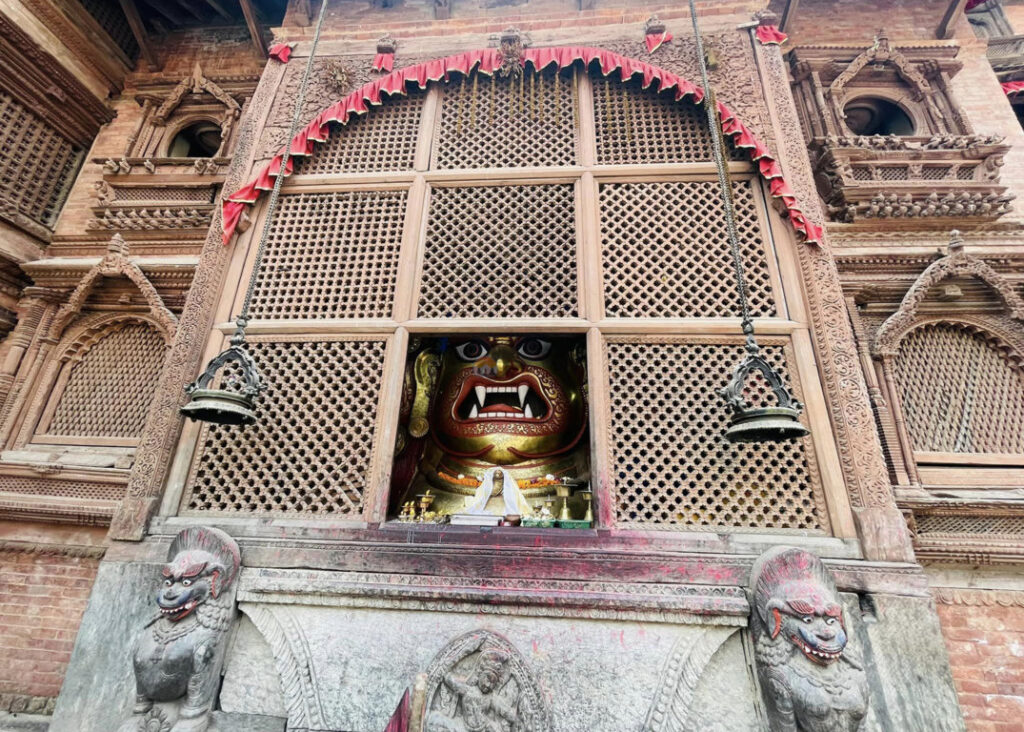
These carvings often depict mythological scenes, religious symbols, floral patterns, and geometric shapes. The level of detail and precision in the woodwork is truly remarkable and adds a touch of elegance and beauty to the structures.
Earthquake-Resistant Architecture
Given Nepal’s geographical location in a seismically active zone, the architecture of the region has adapted to mitigate the impact of earthquakes.
More: Busy Tourist Cities of Nepal
Traditional Newari houses and some temples incorporate earthquake-resistant techniques such as the use of interlocking bricks, wooden frames with flexible joints, and stone foundations. These architectural practices have helped these structures withstand numerous earthquakes over centuries.
Water Spouts and Stone Taps:
Water spouts, known as “hiti” or “dhunge dhara,” are an integral part of Nepalese architecture. Local communities rely on these intricately carved stone structures for a source of fresh water.
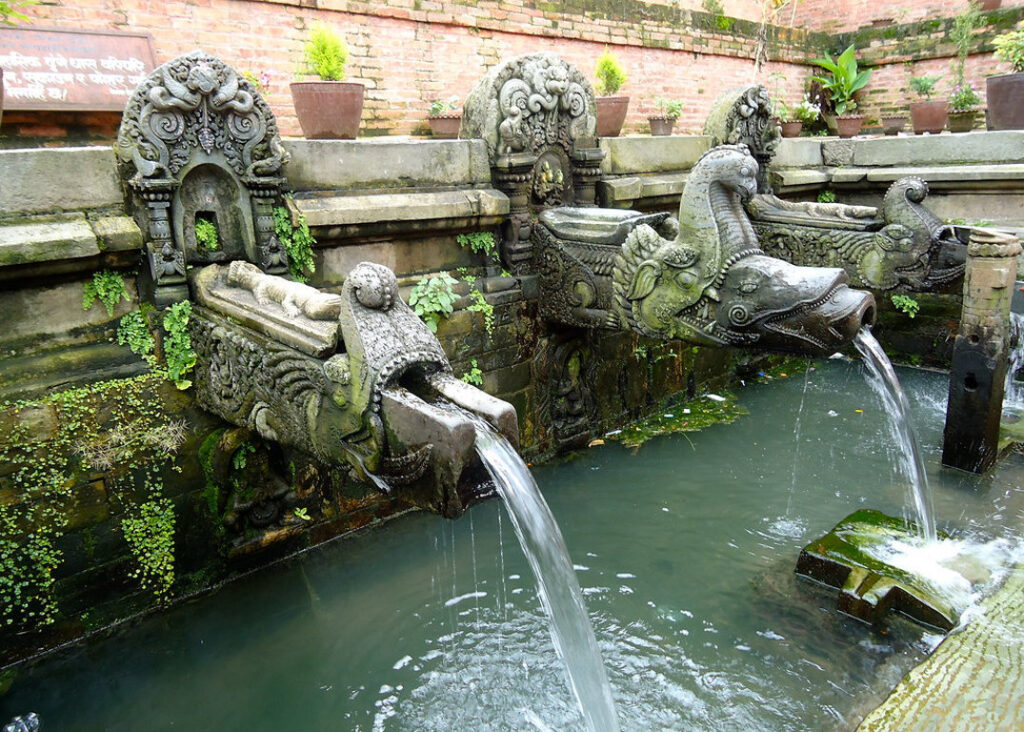
They often feature sculpted figures of deities or mythical creatures, further adding to their aesthetic appeal. These water spouts not only serve a practical purpose but also hold cultural and religious significance.
Modern and Contemporary Architecture:
“Nepal’s architectural heritage blends tradition with modernity, especially in Kathmandu, where modern buildings incorporate traditional motifs.”
Mountain Lodges and Tea Houses:
Given Nepal’s popularity as a trekking and mountaineering destination, mountain lodges and tea houses have become an essential part of the architectural landscape. These structures provide accommodation and services to trekkers and climbers, offering a comfortable resting place amidst the rugged mountain environment.
Mountain lodges blend tradition with cozy interiors for a warm atmosphere.
Let our expert team at Asian Heritage Treks and Travel take care of everything — from guided tours to personalized packing tips and travel arrangements.
Plan My Nepal Trip







